Cars have always played a significant role in movies, often becoming just as iconic as the characters themselves. These vehicles not only serve as modes of transportation but also enhance the storytelling, reflecting the personality of their drivers and setting the tone for unforgettable scenes.
Over the years, many cars have become legends in their own right, capturing the imagination of audiences and leaving a lasting impact on popular culture. From high-speed chases to dramatic escapes, these cars have provided thrills, excitement, and sometimes even comic relief.
This guide will explore ten of the most iconic cars in movie history, highlighting the unique characteristics and memorable moments that have cemented their status as cinematic legends.
Whether it’s a classic muscle car, a futuristic time machine, or a lovable Herbie, these vehicles have earned their place in the hall of fame of movie cars. Let’s take a ride down memory lane and revisit these unforgettable automotive stars.
1. 1964 Aston Martin DB5 – James Bond Series
The 1964 Aston Martin DB5 is arguably the most iconic car in movie history, thanks to its starring role in the James Bond series. First appearing in “Goldfinger” (1964), the DB5 quickly became synonymous with the suave British spy, James Bond, portrayed by Sean Connery. The car’s sleek design, sophisticated features, and impressive gadgets captured the imagination of audiences worldwide.
Equipped with an array of gadgets designed by Q Branch, the DB5 featured machine guns, an ejector seat, a smoke screen, and revolving number plates, among other high-tech modifications. These gadgets not only added an element of excitement and intrigue to the films but also showcased the innovative thinking and resourcefulness of the Bond franchise.
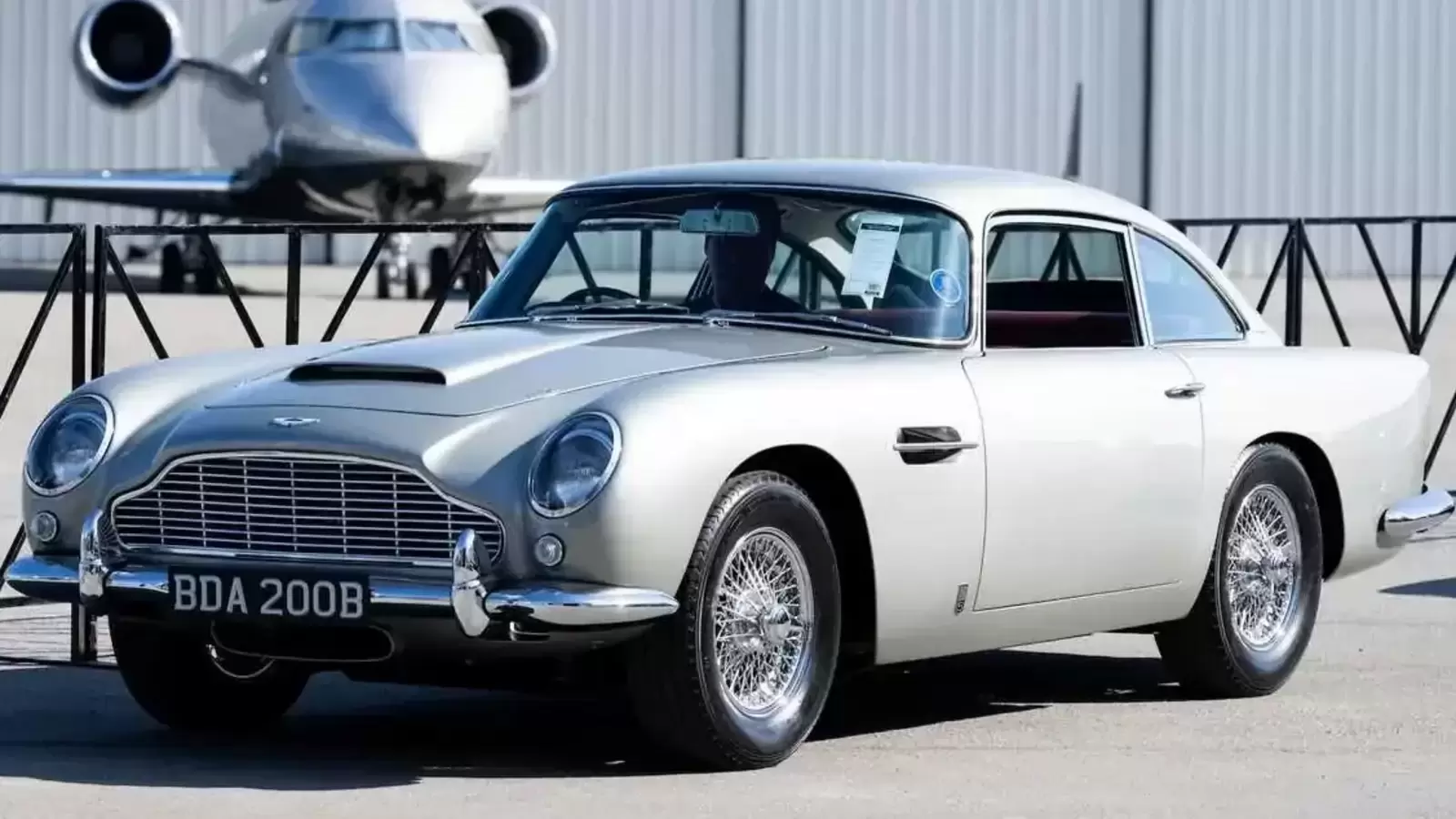
The DB5 made subsequent appearances in several Bond films, including “Thunderball” (1965), “GoldenEye” (1995), “Tomorrow Never Dies” (1997), “Casino Royale” (2006), and “Skyfall” (2012), further solidifying its status as an essential part of the Bond legacy. The car’s association with the character has made it a symbol of sophistication, luxury, and cutting-edge technology.
The Aston Martin DB5’s timeless design and enduring appeal have made it a beloved icon in cinema and automotive enthusiasts alike. Its legacy continues to influence the design of modern Aston Martins and remains a quintessential representation of James Bond’s style and elegance.
2. 1981 DeLorean DMC-12 – Back to the Future
The 1981 DeLorean DMC-12 became an instant icon when it was transformed into a time machine in the “Back to the Future” trilogy. Designed by John DeLorean, the car’s futuristic gull-wing doors and stainless steel body gave it a distinctive appearance that set it apart from other vehicles of its time.
However, it was the imaginative modifications and the time travel adventures that truly cemented its place in movie history. In the film, Doc Brown, played by Christopher Lloyd, modifies the DeLorean with a flux capacitor, a key component that allows time travel when the car reaches 88 miles per hour.

The combination of the car’s unique design and the thrilling concept of time travel fascinated audiences and made the DeLorean a beloved part of pop culture. Throughout the trilogy, the DeLorean undergoes various transformations, including the addition of hover capabilities and a “Mr. Fusion” energy generator, showcasing the film’s creative vision and technological imagination.
The car’s adventures through different time periods provided endless excitement and memorable moments, from the 1950s to the Wild West. The DeLorean DMC-12’s association with “Back to the Future” has made it one of the most recognizable and celebrated cars in movie history. Its iconic status continues to inspire fans, and the car remains a symbol of innovation, adventure, and the limitless possibilities of time travel.
3. 1968 Ford Mustang GT Fastback – Bullitt
The 1968 Ford Mustang GT Fastback gained legendary status after its appearance in the 1968 action film “Bullitt,” starring Steve McQueen. The car played a pivotal role in one of the most famous car chase scenes in movie history, where McQueen’s character, Frank Bullitt, drives through the streets of San Francisco in a high-speed pursuit.
The chase scene, which lasts over 10 minutes, is renowned for its realism and intensity, featuring breathtaking stunts and high-speed maneuvers. The Mustang GT Fastback, with its raw power and distinctive design, became an integral part of the film’s success. The roaring V8 engine and the car’s agility showcased the capabilities of the Mustang, fascinating audiences and car enthusiasts alike.
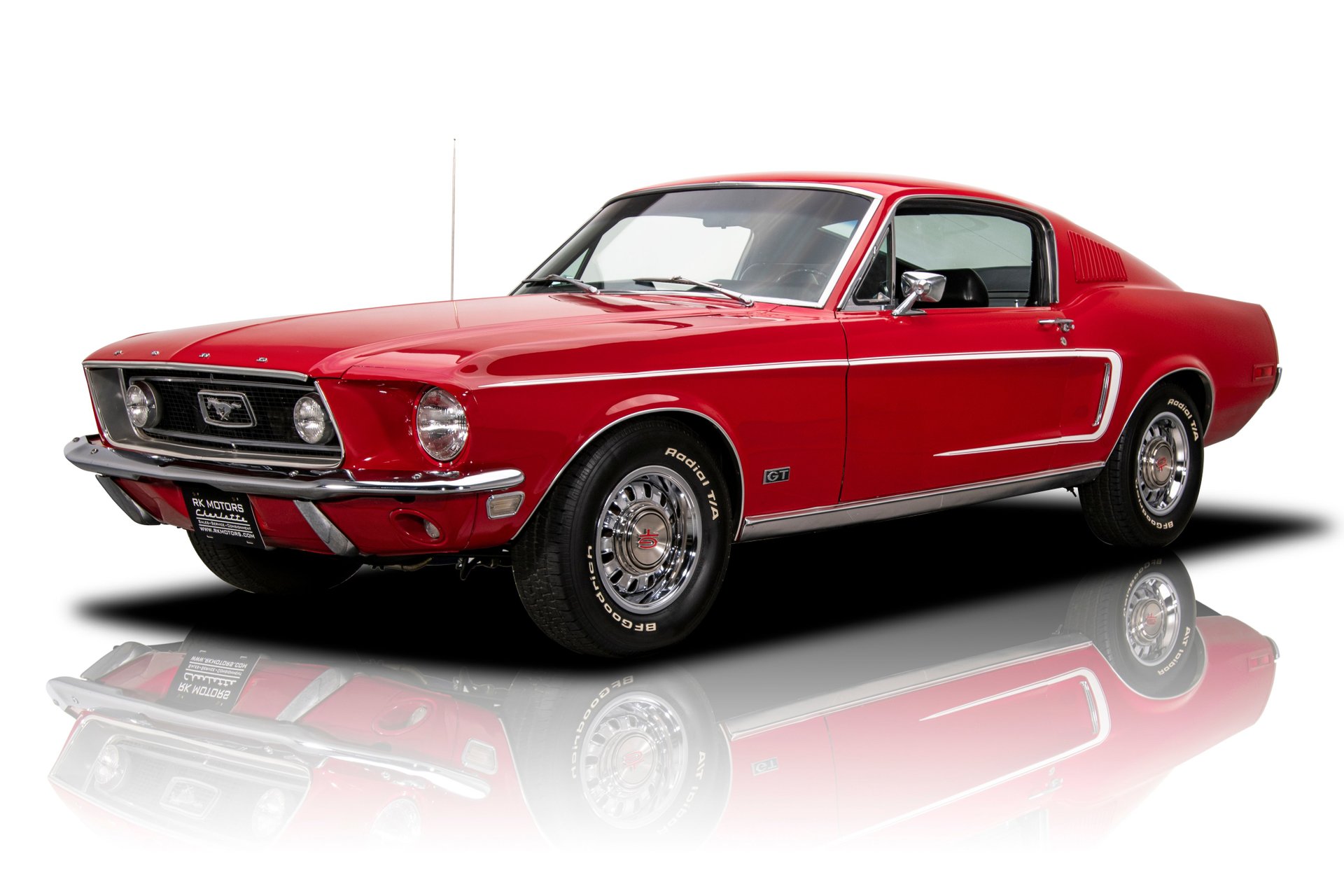
Steve McQueen’s portrayal of Frank Bullitt and his connection with the Mustang added to the car’s iconic status. McQueen, known for performing his stunts, brought a sense of authenticity and excitement to the driving sequences, further raising the car’s significance in the film.
The 1968 Ford Mustang GT Fastback’s role in “Bullitt” has made it a cultural icon, influencing car design and appearing in various tributes and homages over the years. Its legacy as one of the most famous movie cars remains strong, and it continues to be celebrated by fans of the film and automotive history.
4. 1977 Pontiac Firebird Trans Am – Smokey and the Bandit
The 1977 Pontiac Firebird Trans Am became a star in its own right after its appearance in the 1977 film “Smokey and the Bandit,” starring Burt Reynolds. The film’s plot revolves around a high-speed cross-country chase, with Reynolds’ character, Bo “Bandit” Darville, driving the Trans Am as a decoy to distract law enforcement.
The Trans Am’s sleek black exterior, gold accents, and iconic “screaming chicken” hood decal made it an instantly recognizable and stylish vehicle. The car’s powerful performance and agility were showcased throughout the film, with thrilling chase scenes and daring stunts that captured the audience’s attention.
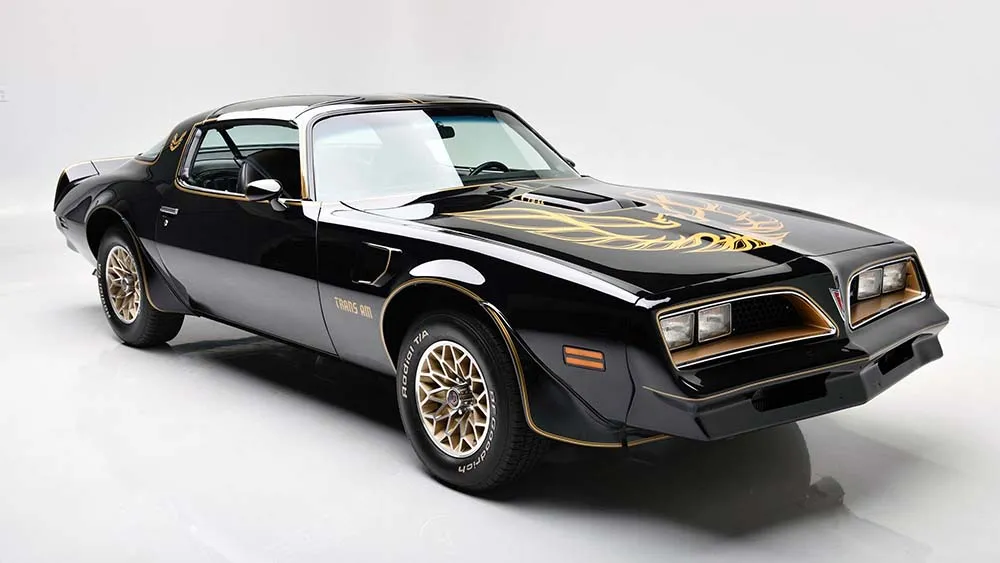
Burt Reynolds’ charismatic portrayal of the Bandit and his chemistry with the Trans Am contributed to the car’s legendary status. The film’s success helped boost the popularity of the Trans Am, making it a symbol of 1970s automotive culture and a coveted car for enthusiasts.
The 1977 Pontiac Firebird Trans Am’s association with “Smokey and the Bandit” has made it an enduring icon in movie history. Its influence can be seen in various car designs and pop culture references, and it remains a beloved vehicle for fans of the film and classic muscle cars.
5. 1970 Dodge Charger R/T – The Fast and the Furious
The 1970 Dodge Charger R/T became a symbol of muscle car prowess after its appearance in the 2001 film “The Fast and the Furious,” starring Vin Diesel as Dominic Toretto. The Charger, with its powerful engine and aggressive design, played a central role in the film’s high-octane action sequences and street racing culture.
The film’s climax features an intense drag race between Toretto’s Charger and Brian O’Conner’s (Paul Walker) Toyota Supra, showcasing the Charger’s raw power and speed. The iconic wheelie performed by the Charger during the race became a memorable moment for fans and solidified the car’s legendary status.
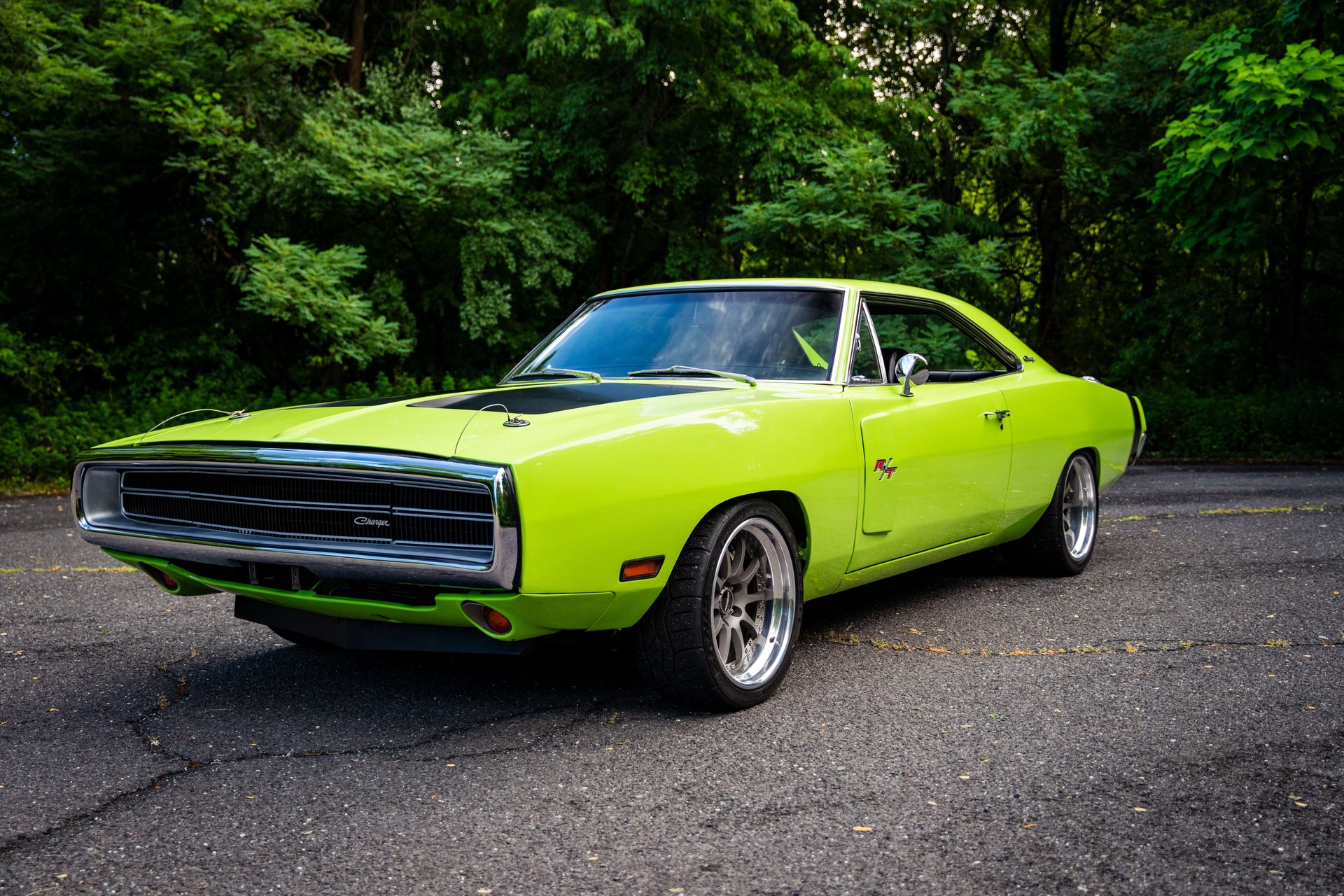
The Charger R/T’s significance in the “Fast and Furious” franchise extended beyond the first film, with the car making appearances in several sequels. Its association with Dominic Toretto and the themes of family, loyalty, and brotherhood added to its iconic status.
The 1970 Dodge Charger R/T’s role in “The Fast and the Furious” has made it a cultural icon, representing the muscle car era and the thrill of street racing. Its influence continues to be felt in the automotive world, and it remains a favorite among car enthusiasts and fans of the franchise.
6. 1961 Ferrari 250 GT California Spyder – Ferris Bueller’s Day Off
The 1961 Ferrari 250 GT California Spyder gained cinematic fame in the 1986 comedy “Ferris Bueller’s Day Off,” directed by John Hughes. In the film, Ferris Bueller, played by Matthew Broderick, convinces his friend Cameron Frye (Alan Ruck) to borrow his father’s prized Ferrari for a day of adventure in Chicago.
The Ferrari’s elegant design, powerful engine, and status as a rare and valuable classic car made it a perfect choice for the film. The scenes featuring the Ferrari showcased its beauty and performance, adding to the sense of freedom and rebellion that defined Ferris Bueller’s escapades.
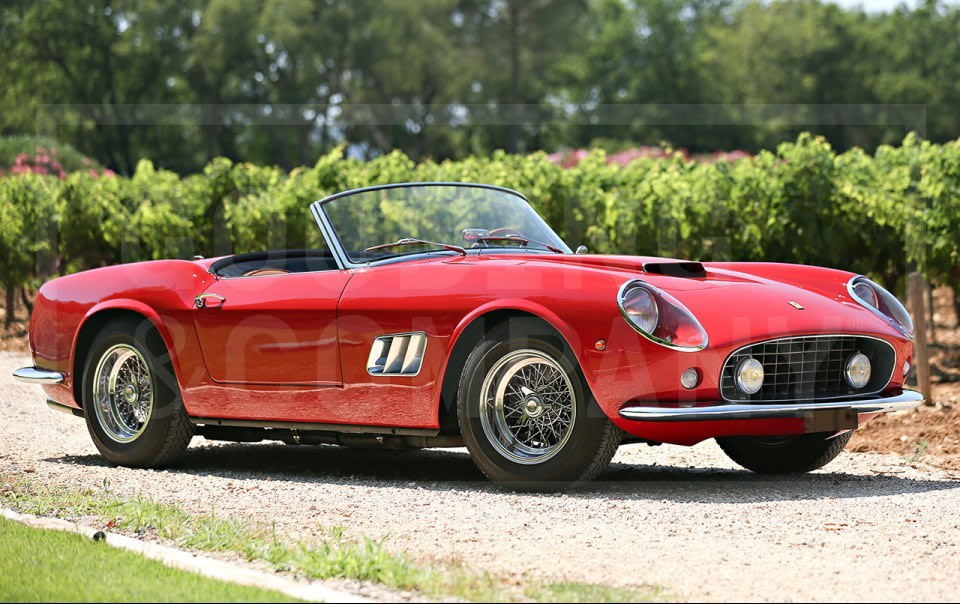
One of the film’s most memorable moments involves the Ferrari being accidentally launched out of a glass garage and crashing into a ravine, much to Cameron’s horror. This dramatic scene highlights the car’s significance and adds an element of tension and humor to the film.
The 1961 Ferrari 250 GT California Spyder’s role in “Ferris Bueller’s Day Off” has made it an iconic movie car, symbolizing the allure of luxury and the spirit of youthful adventure. Its association with the film has cemented its place in cinematic history, and it remains a beloved classic for car enthusiasts and movie fans alike.
7. 2005 Ford GT40 – Ford v Ferrari
The 2005 Ford GT40 played a pivotal role in the 2019 film “Ford v Ferrari,” directed by James Mangold. The film tells the true story of Ford Motor Company’s efforts to defeat Ferrari at the 24 Hours of Le Mans in 1966, with Carroll Shelby (Matt Damon) and Ken Miles (Christian Bale) leading the charge.
The GT40’s sleek design, powerful V8 engine, and impressive performance on the racetrack made it a formidable competitor. The film showcased the car’s engineering prowess and the intense rivalry between Ford and Ferrari, capturing the excitement and drama of endurance racing.
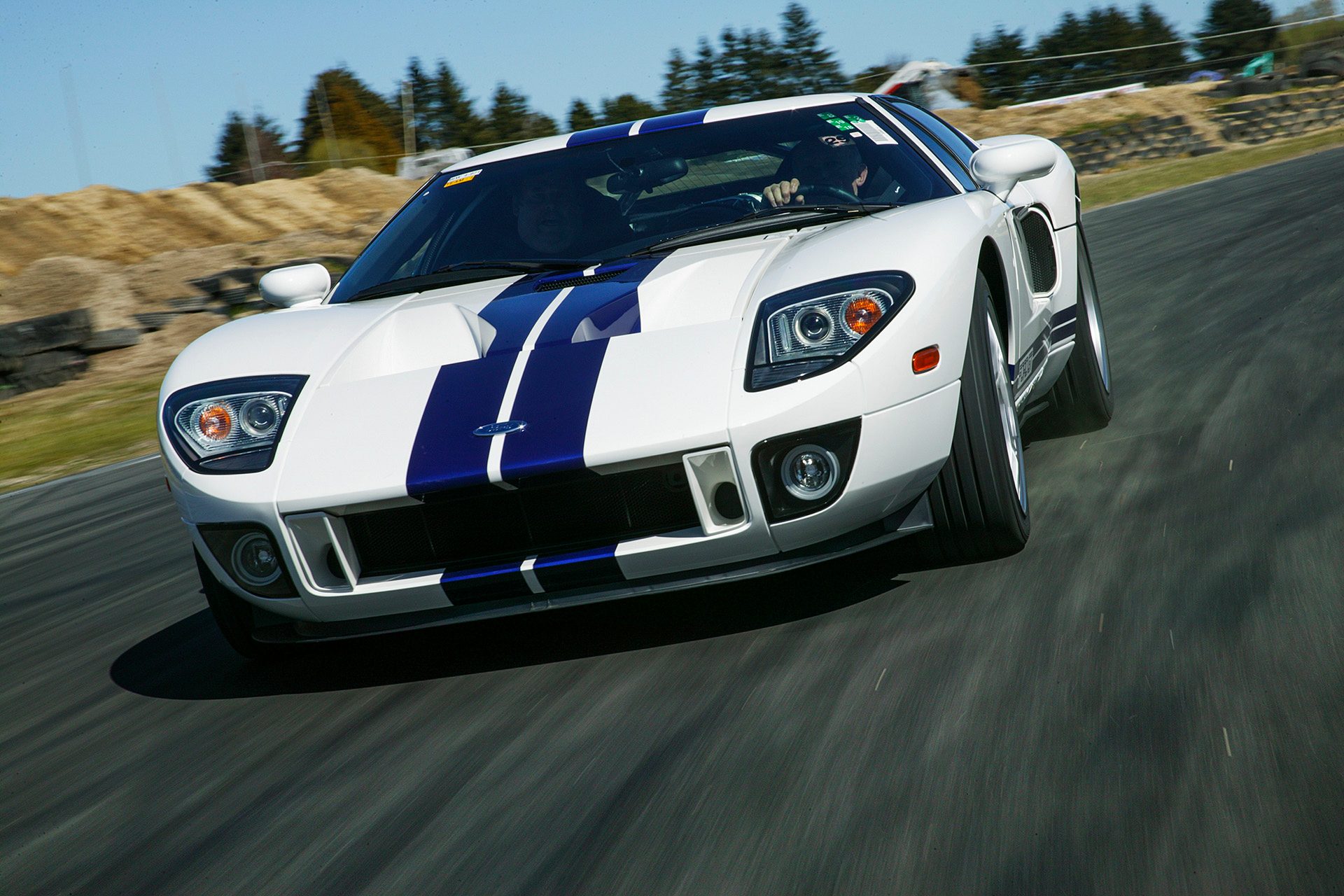
The GT40’s significance in the film goes beyond its racing capabilities. It symbolizes the determination and innovation of the Ford team, who were determined to break Ferrari’s dominance in the sport. The film’s depiction of the GT40’s development process, from the initial design to the testing and fine-tuning, highlights the meticulous work and dedication required to create a winning race car.
One of the film’s most memorable moments is the thrilling race at Le Mans, where the GT40’s performance underlines the culmination of Ford’s efforts. The car’s victory at the 1966 race marked a significant milestone in automotive history, demonstrating the prowess of American engineering on the global stage.
The 2005 Ford GT40’s role in “Ford v Ferrari” has cemented its place as an iconic movie car. Its legacy as a symbol of racing excellence and innovation continues to inspire car enthusiasts and racing fans around the world.
8. 1963 Volkswagen Beetle – Herbie
The 1963 Volkswagen Beetle, affectionately known as Herbie, became a beloved character in its own right through the “Herbie” film series. The first film, “The Love Bug” (1968), introduced audiences to the sentient car with a mind of its own and a penchant for mischief. Herbie’s endearing personality and spirited antics endeared it to viewers of all ages.
The Beetle’s distinctive design, with its rounded shape and compact size, made it an ideal choice for the character. Herbie’s signature racing stripes and number 53 decal became instantly recognizable and iconic. The car’s ability to perform seemingly impossible feats, such as driving on its own and outsmarting its human adversaries, added to its charm and appeal.
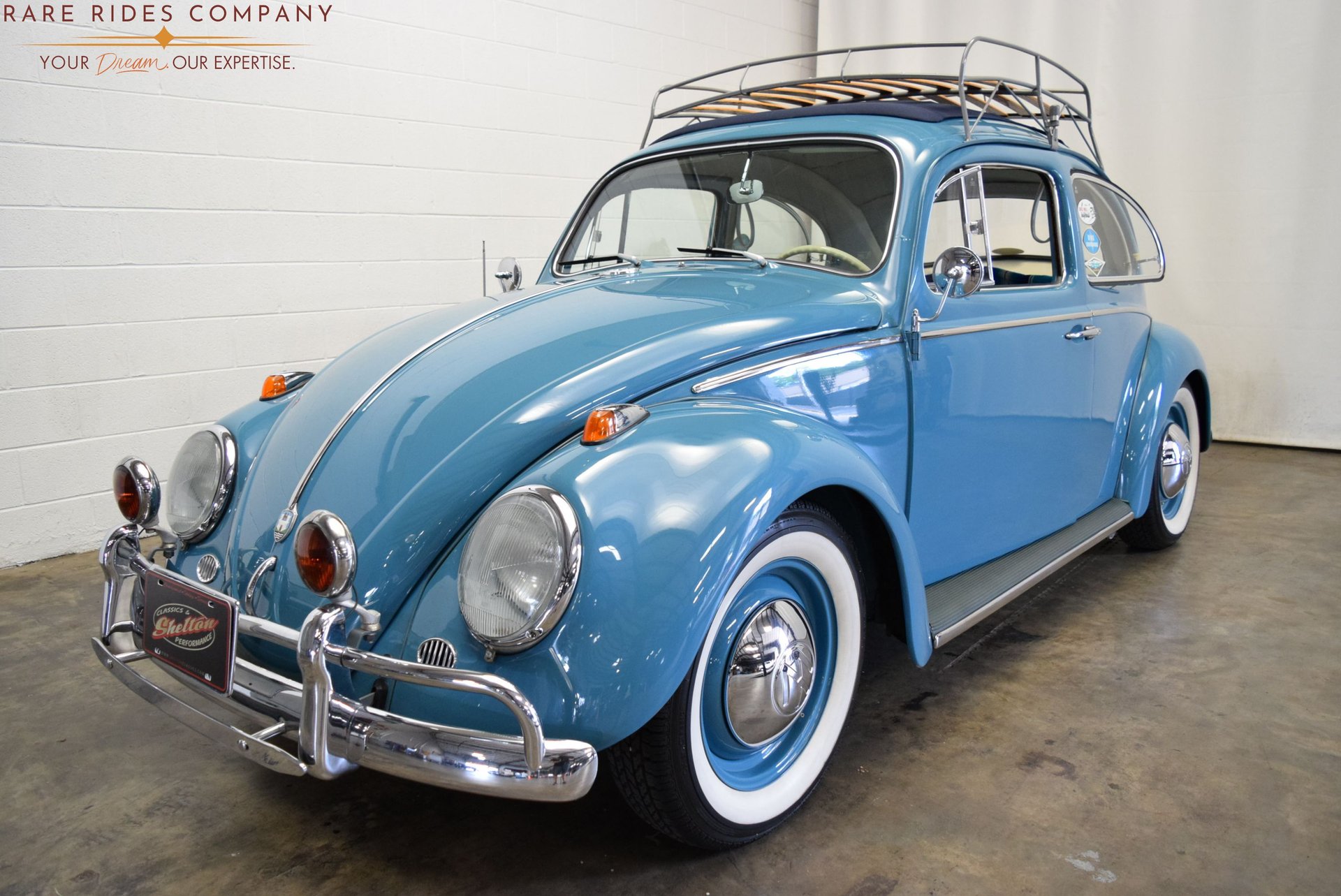
Throughout the film series, Herbie’s adventures took it on various escapades, from racing in prestigious events to helping its owners overcome personal challenges. The car’s loyalty, determination, and playful nature resonated with audiences, making it more than just a vehicle but a cherished character.
Herbie’s influence extended beyond the screen, inspiring toys, merchandise, and even theme park attractions. The 1963 Volkswagen Beetle’s role as Herbie has made it an enduring icon in movie history, representing the spirit of fun and the magic of cinema.
9. 1973 XB GT Ford Falcon – Mad Max
The 1973 XB GT Ford Falcon, known as the “Pursuit Special” or “Interceptor,” became a symbol of post-apocalyptic survival in the “Mad Max” film series. First appearing in “Mad Max” (1979), the car was driven by Mel Gibson’s character, Max Rockatansky, and played a crucial role in the film’s depiction of a dystopian future.
The Falcon’s aggressive design, with its black paint, supercharger, and modified bodywork, made it an iconic and menacing vehicle. The car’s powerful performance and durability were showcased in high-speed chases and intense action sequences, emphasizing its importance in a world where resources were scarce, and survival was paramount.
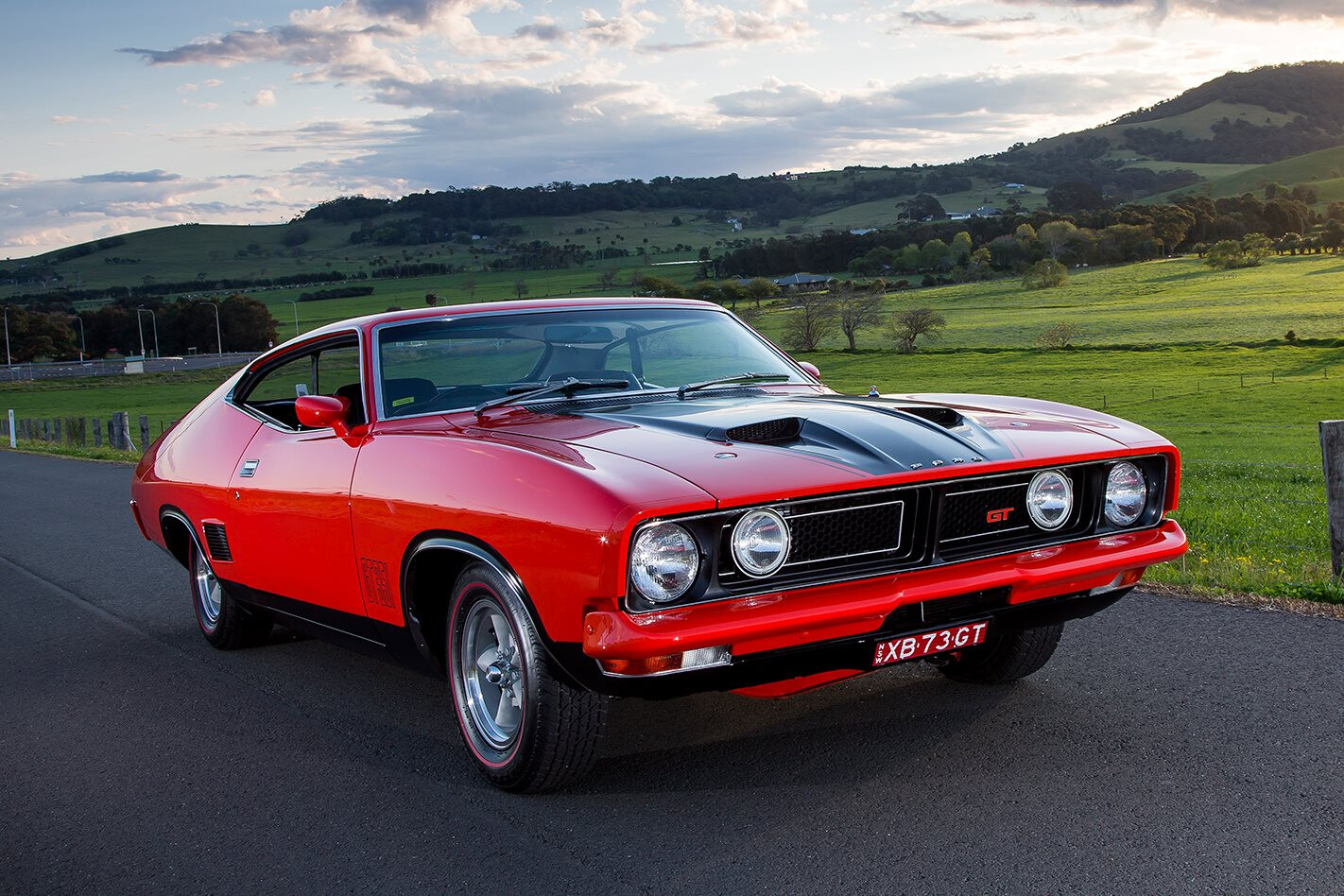
The Pursuit Special’s transformation from a standard police vehicle to a heavily modified interceptor symbolized Max’s journey from lawman to rogue survivor. The car’s presence in the film added to the gritty and chaotic atmosphere, becoming a key element in the storytelling.
The Falcon’s continued appearances in the “Mad Max” sequels, including “Mad Max: Fury Road” (2015), solidified its status as an iconic movie car. Its association with the franchise and its representation of resilience and rebellion have made it a beloved symbol in popular culture.
10. 1958 Plymouth Fury – Christine
The 1958 Plymouth Fury became an unforgettable character in its own right in the 1983 horror film “Christine,” based on Stephen King’s novel of the same name. The car, possessed by a malevolent force, becomes the central antagonist, influencing and controlling its owner, Arnie Cunningham (Keith Gordon).
Christine’s distinctive design, with its red and white paint job and sleek fins, made it an ideal choice for a supernatural thriller. The car’s transformation from a dilapidated wreck to a pristine and menacing vehicle mirrored Arnie’s descent into obsession and darkness.
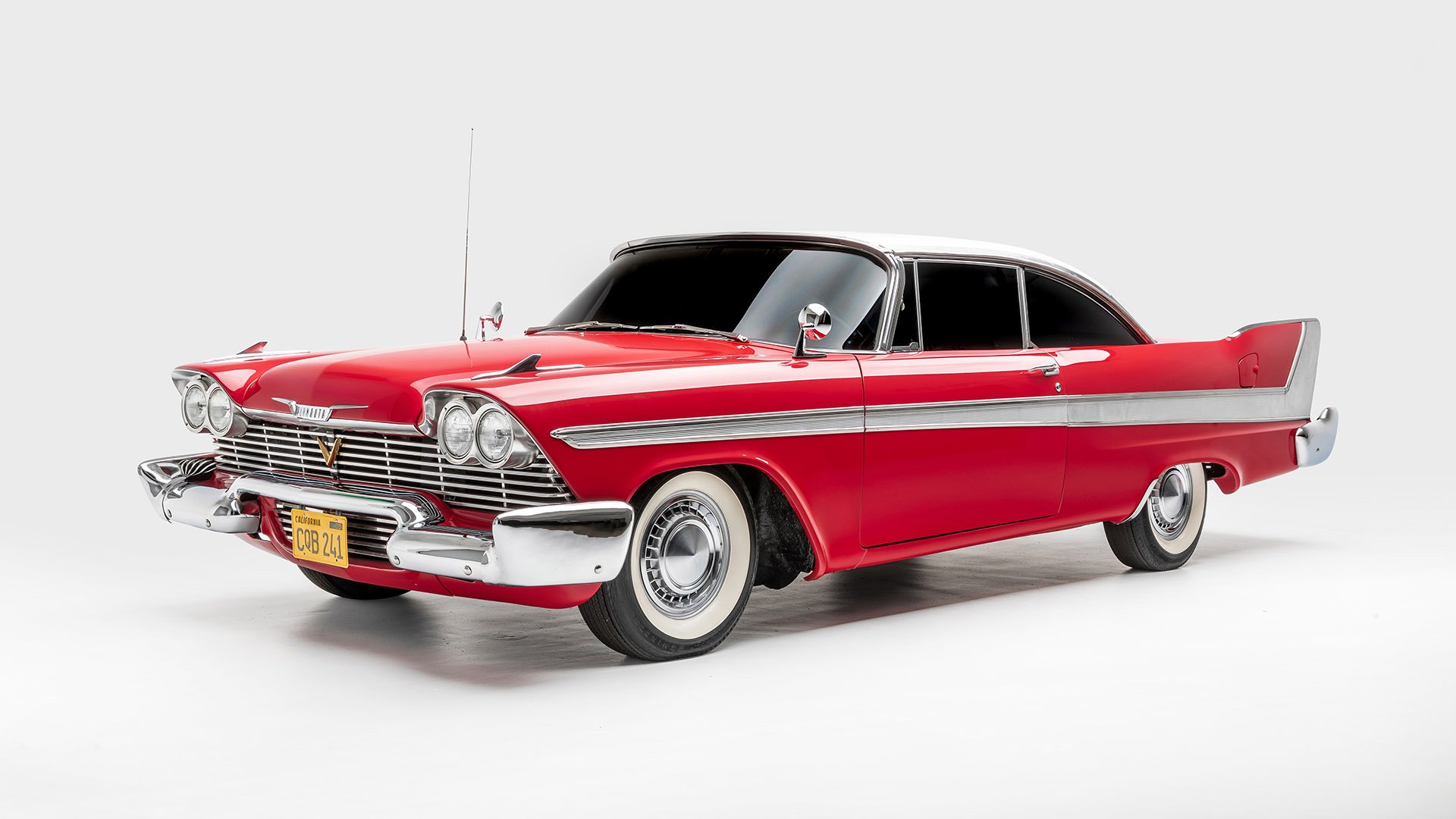
The film’s depiction of Christine’s abilities, from self-repairing damage to exacting vengeance on its enemies, added to the car’s eerie and unsettling presence. The scenes of Christine hunting down and attacking those who wronged Arnie became some of the most memorable moments in horror cinema.
Christine’s role as a sentient and malevolent force added a unique twist to the classic car trope, making it a standout in both the horror and automotive genres. The 1958 Plymouth Fury’s association with “Christine” has made it an iconic movie car, representing the intersection of technology and terror.

